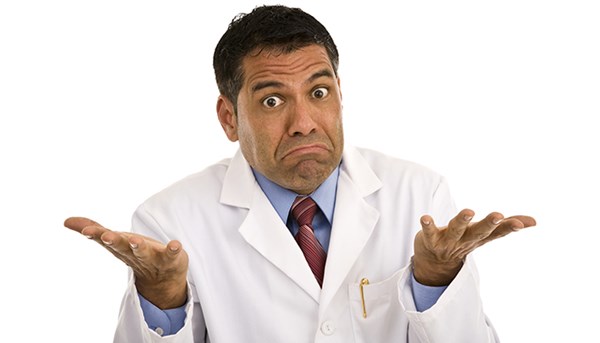August 2017
Fewer than half of health care providers accurately comprehend costs to patients.
Emergency department health care professionals (ED HCPs) have a unique role in providing care to patients with emergency medical conditions without regards for the ability to pay. Though this unfunded mandate to treat can be life-saving, the cost for care is still billed to the patient. For those without insurance, the bills can be overwhelming. If the patient ultimately does not pay, the costs are borne by the health care providers and taxpayers. Therefore, ED HCPs should be cognizant of high costs and be judicious in their practice.
A recent survey-based study assessed ED HCPs knowledge regarding routine care for three common presentations: a 35-year-old with abdominal pain, a 57-year-old with shortness of breath, and a 7-year-old with sore throat. The study found that ED HCPs frequently did not understand how much the delivery of their care costs the patient. Correct responses were reported for 43% for the first case, 32% for the second case, and 40% for the third case. Higher level of training was associated with better perceived understanding of costs, but it was not correlated with accuracy of that knowledge. Participants from tertiary care institutions were more likely to choose higher cost ranges compared to those from rural or community hospitals.
Though this study has its limitations, such as the broad scope of what the common presentations may include, it demonstrates that ED HCPs have poor understanding of the cost of care billed to patients. Health spending in the United States is the highest among all OECD countries. The Centers for Medicare and Medicaid Services predicts that national health expenditure will grow on average 5.6% between 2016 and 2025. The health share of Gross Domestic Product (GDP) is expected to increase from 17.8% in 2015 to 19.9% in 2025.
The current rate of health care expenditures is unsustainable. Providing education to ED HCPs regarding the cost of care is one option. Displaying the costs of diagnostic tests and medications in the electronic medical record is another, however evidence to date reveals conflicting results (here and here). Health systems, and our patients, could benefit from implementing these interventions, which by increasing transparency might decrease spending.
ARTICLE: Hoffman KA, Mancini M. Emergency Health Care Professionals' Understanding of the Costs of Care in the Emergency Department. J Am Osteopath Assoc. 2017;117(6):359-364.
BACKGROUND: Efficiency and fiscal responsibility are important to the equal, safe, and effective delivery of care in the emergency department, where all presenting patients must be evaluated for emergent conditions. Health care professionals' understanding of the costs of care is a first step to developing rational approaches for the efficient distribution of the finite resources hospitals and emergency departments have at their disposal to reduce costs to patients and health care systems.
OBJECTIVE: To determine emergency department health care professionals' knowledge of the costs to patients of routine care delivered in the emergency department.
METHODS:An internet-based survey of currently practicing emergency medicine health care professionals with various levels of training (physicians, residents, physician assistants, and nurse practitioners) was conducted to evaluate their ability to identify the cost of care for 3 common presentations to the emergency department: abdominal pain, dyspnea, and sore throat.
RESULTS: 441 emergency medicine health care professionals participated. In the 3 cases presented, correct costs were determined by 43.0%, 32.0%, and 40.1% of participants, respectively. Geographic region was not related to cost determination. Larger institution size was related to greater cost chosen (P=.01). Higher level of training was significantly correlated with perceived understanding of cost (P<.001); however, it was not related to accurate cost assessment in this study.
CONCLUSIONS: Emergency medicine health care professionals have an inadequate understanding of the costs associated with care routinely provided in the emergency department. PMID: 28556857
EMRA + PolicyRx Health Policy Journal Club: A collaboration between Policy Prescriptions and EMRA
 As emergency physicians, we care for all members of society, and as such have a unique vantage point on the state of health care. What we find frustrating in our EDs - such as inadequate social services, the dearth of primary care providers, and the lack of mental health services - are universal problems.
As emergency physicians, we care for all members of society, and as such have a unique vantage point on the state of health care. What we find frustrating in our EDs - such as inadequate social services, the dearth of primary care providers, and the lack of mental health services - are universal problems.As EM residents and fellows, we learn the management of myocardial infarctions and traumas, and how to intubate, but we are not taught how health policy affects all aspects of our experience in the ED. Furthermore, given our unique position in the health care system, we have an incredible opportunity to advocate for our patients, for society, and for physicians. Yet, with so many competing interests vying for our conference education time, advocacy is often not included in the curricula.
This is the gap this initiative aims to fill. Each month, you will see a review of a new health policy article and how it is applicable to emergency physicians.



